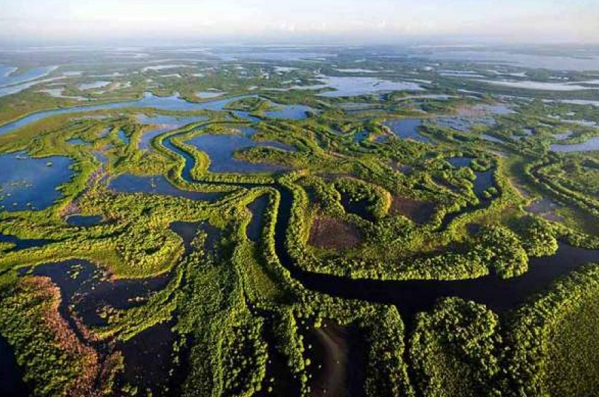
As part of its 34th cycle of Caribbean Conferences—Conferencias Caribeñas 34—the Institute of Caribbean Studies at the University of Puerto Rico-Río Piedras (UPR-RP) invites the academic community and the general public to the online lecture “Cuba’s Ciénaga de Zapata: Despoiled Landscapes and Biodiversity Conservation,” by Dr. Lizabeth Paravisini-Gebert (Sarah Tod Fitz Randolph Distinguished Professor Chair, Vassar College). The commentator for this event will be Dr. Reinaldo Funes Monzote (Department of History, Universidad de La Habana).
This event will take place via Zoom on Wednesday, April 24, 2024, from 1:00 to 3:30pm at https://us02web.zoom.us/j/6898333879?omn=88213095785 (Meeting ID: 689 833 3879).
Description: This presentation focuses on the history of environmental decay of Cuba’s Ciénaga de Zapata, the Caribbean’s largest wetlands, during the long 19th century, a period during which the swamp became a threatened space “in imminent danger of being completely drained,” many of its endemic species vulnerable to extirpation or extinction. As a forbidding backwater, difficult to penetrate, I trace here some of the rare textual glimpses offered by those venturing into its interior from the mid-19th-century to the early decades of the 20th, as the fate of this most vital of natural Caribbean landscapes and of the unique biodiversity it supports hangs in the balance.
These texts include a letter written by a young José Martí during the nine months he spent living with his father on the edge of the swamp; the narrative of the fast decline of the Cuban Red Macaw population in its last bastion of Hanábana, a decline that highlights the swamp’s deterioration in the late 1800s; the memoirs of J. A. Cosculluela, an environmental engineer (1918), and Pura de Armas (2008), and their focus on the subsistence cultures of the Ciénaga, from which emerges a portrait of the typical cenaguero as a degraded peasant; and Luis Felipe Rodríguez’s novel La conjura de la Ciénaga (1923), which portrays the zone as emblematic of the ills facing an independent Cuba in the early decades of the 20th century. My analysis ends with a coda about the success of the Cuban Revolution’s conservation efforts, which led to the revitalization of the Ciénaga, the protection of its endemic species, and its concomitant designation as a UNESCO World Heritage site in the year 2000. The coda underscores the swamp’s recovery from the verge of extinction as a habitat and ecosystem—and through its recovery the preservation of the hundreds of species of fauna and flora that now thrive in the wetlands.
The talk will be broadcast via YouTube https://www.youtube.com/channel/UCqpZUsp1fhBfItDy1dp9tVA
Contact information: Tel. 787-764-0000, ext. 87749; email: iec.ics@upr.edu; and visit http://iec-ics.uprrp.edu
As part of its 34th cycle of Caribbean Conferences—Conferencias Caribeñas 34—the Institute of Caribbean Studies at the University of Puerto Rico-Río Piedras (UPR-RP) invites the academic community and the general public to the online lecture “Cuba’s Ciénaga de Zapata: Despoiled Landscapes and Biodiversity Conservation,” by Dr. Lizabeth Paravisini-Gebert (Sarah Tod Fitz Randolph Distinguished Professor Chair, Vassar







